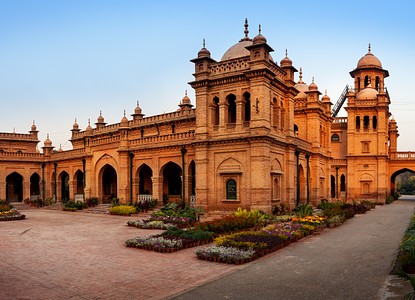Tourism
Provinces of Pakistan
Pakistan has four Provinces:

Punjab
Punjab, its name meaning ‘Land of Five Rivers’, is the richest, most fertile and most heavily populated province of Pakistan. (The five rivers referred to the Jhelum, Chenab, Ravi, Sutlej and Beas)
The best time to visit northern Punjab is in the spring, from February to April, and in the autumn, from September to November. Southern Punjab is extremely hot in summer, so Multan is at its best in winter, from November to February
Lahore
Situated on the east bank of the Ravi River, Lahore is a very old city. Legend traces its origin to Loh, the son of Rama Chandra, the hero of the Ramayana, but history records that it began as a dependency of the 8th century AD Hindu ruler, Lalitiditya. In the early 11th century it came under Muslim rule and evolved as a centre of Islamic culture and learning as well as trade and commerce. In the 13th century it was depopulated and razed to the ground by the Tartar-Mongol hordes of Genghis Khan. Lahore was a cultural and intellectual centre during both the Mughal and British eras, but it is the diversity and contrast of the different sections of the city which make Lahore interesting.
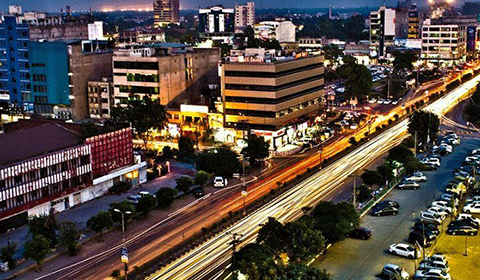

Badshahi Mosque
The Imperial or the Badshahi Mosque is across the courtyard from Alamgiri Gate of the Lahore Fort. The Mosque, which is made up entirely of red sand-stone, was built by Emperor Aurangzeb, the last of the great Mughals, in a record time of two and-a-half years.
Minar-e-Pakistan
Minar-e-Pakistan is a new landmark in Lahore and stands in the Iqbal Park to commemorate the date when a resolution was passed there in 1940 demanding the creation of separate homeland for the Muslims of South Asian sub-continent. The Minar is a blend of Mughal and modern architecture. The Minar is about 60 meters tall.
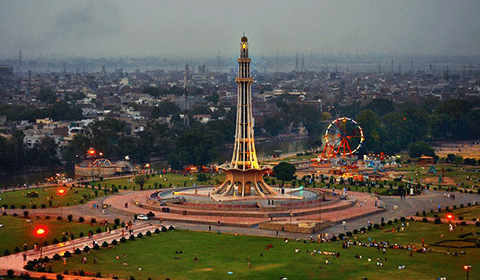

Shalimar Gardens
Three miles east of Lahore are the famous Shalimar Gardens laid out by the Mughal Emperor Shah Jehan in 1642 AD. The Gardens are spread out in typical Mughal style and are surrounded by high walls with watch-towers at the four corners. Originally, the gardens were spread over seven ascending terraces, but only three remain now which cover an area of about 42 acres. The brick-work of the floors of the three terraces have been repaired according to their original designs which differ on all three terraces. There is a marble pavilion underneath with water flows and cascades down over a carved, marble slab creating a waterfall effect. Across the waterfall is a marble throne. At the end of the second terrace is a beautiful structure called Sawan Bhadon, a sunken tank niches on its three sides. Water cascades down from it in sheets in front of the niches, producing the sound of falling rain.
Shrines / Mausoleums
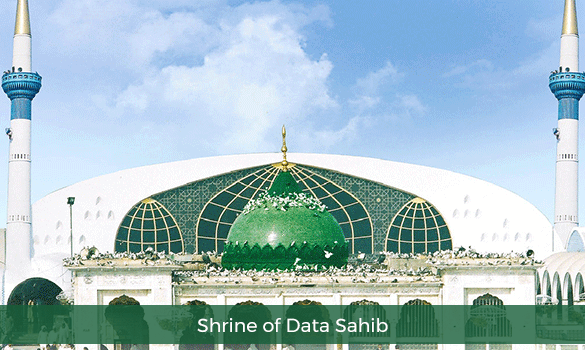
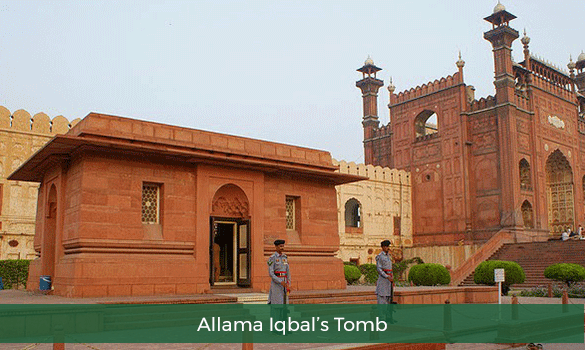
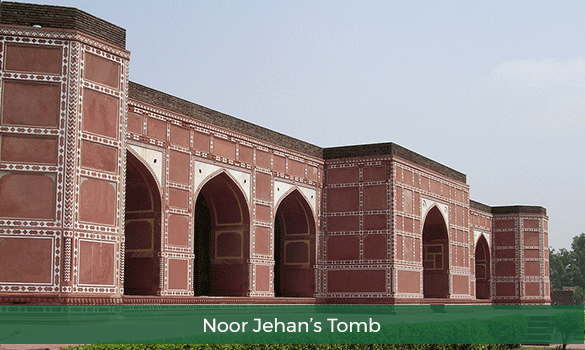


Bahawalpur
Bahawalpur is 889 km from Karachi. The founder of the state of Bahawalpur was Nawab Bahawal Khan Abbasi I. The Abbasi family ruled over the State for more than 200 years (1748 to 1954).
Noor Mehal is one of the three palaces that attracts tourists. Bahawalpur is also known for its distinctly embroidered slippers and shoes and the filigree pottery. It has a marble mosque in the Fawara Chowk and a few British buildings like the Science College. Bahawalpur has a modest museum with a fine collection of coins, medals, postage stamps of former State of Bahawalpur, manuscripts, documents, inscriptions, wood carvings, camel skin paintings, historical models and stone carvings. All the pieces date back to the Islamic and the pre-Islamic period.
Uch Sharif
Uch Sharif, 75 km from Bahawalpur, is a very old town. It is believed that it was founded in 500 BC. Some historians believe that Uch was there even before the advent of Bikramajit when Jains and Buddhist ruled over the sub-continent. At the time of the invasion by Alexander the Great, Uch was under Hindu rule.
Uch Sharif has been described as a flourishing and beautiful town perched upon the plateau near the confluence of the Chenab and Ravi rivers. The famous shrines existing at Uch include those of Hazrat Bahawal Haleem, Hazrat Jalaluddin Surkh Bukhari, Makhdoom Jahanian Jahangasht, Shaikh Saifuddin Ghazrooni and Bibi Jawanadi. The shrine of Bibi Jawandi is a central Asian design, titled in the blue faience.
Uch is a small town today and divided into three different parts known as (i) Uch Bukhari, after Hazrat Syed Jalaluddin Bukhari Surkhposh, (ii) Uch Jilani, after the name of Hazrat Shaikh Mohammad Ghaus Qadri Jilani (Bandagi), who came from Halab in 887 AH, (iii) Uch Mughlan after the Mughal rulers.


Multan
About 966 km from Karachi, and more or less right in the centre of the country, lies the ancient city of Multan. Multan, the ‘City of Pirs and Shrines,’ is a prosperous city of bazaars, mosques, shrines and superbly designed tombs. It is also a city of dust, summer heat and beggars. It has a long history. Alexander the Great added it to his list of Indus conquests. In 641 AD Xuang Tzang found it ‘agreeable and prosperous’ – Mohammad Bin Qasim was the next to conqueror Multan in 712 AD. Mahmud of Ghazni invaded in 1006, Timurlane in 1398. In the 16th century it was the Moghuls turn, followed by the Sikhs in 1752 and the British in 1849. The old city has narrow colorful bazaars full of local handicrafts and narrow winding lanes. There are many places of historical, cultural and recreational interest in the city.
Harappa
This was the first of the Indus Valley Civilization sites to be discovered, but in size and condition it is inferior to Moenjodaro. Located 186 km south-west of Lahore, Harappa is reached via Sahiwal, formerly known as Montgomery. Situated beside an earlier course of the Ravi River, Harappa was discovered in 1920-21, but through the ages the site was quarried for bricks and most of the buildings excavated so far are in poor condition.
The cemeteries discovered at Harappa confirm that the Indus Valley people buried their dead, many of them wearing finger rings, necklaces of steatite beads, anklets of paste bead, earnings and shell bangles. Copper mirrors, antimony rods, sheer spoons and vessels and urns of various shapes and size lay in the graves. Some of the female skeletons had anklets of tiny beads and girdles studded with some-precious stones.
Excavations have recalled evidence of some pre-Harappa material which shows strong affinity with the Kot Diji finds.
On display at the Museum are excavated materials, including terracotta toys, gamesman, jewelry, animal figurines and bronze utensils statuettes.
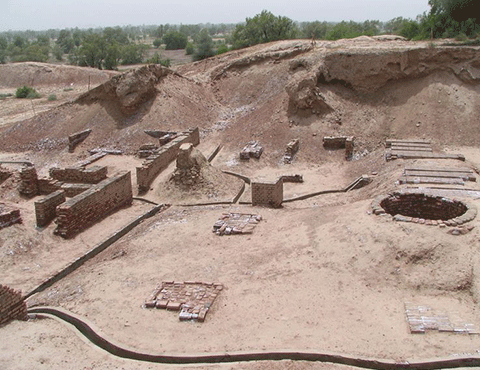
Sindh
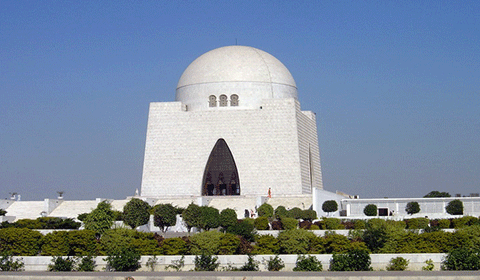
Karachi
Karachi, the largest and the most populous city of Pakistan, presents an interesting and colorful combination of the old and new. The narrow twisting lanes and alleys of the old city throb with life alongside the wide roads and elegant modern buildings. Within the city, talented artisans with age-old skills produce handicrafts of exquisite beauty.
Karachi offers a variety of pleasant attractions: wide sunny beaches, deep-sea fishing, yachting, golf and horse racing all-year round. Its restaurants provide a wide choice of Pakistani and Western cuisine. Its markets and bazaar offer endless variety of exciting shopping including indigenous handicrafts, rugs and carpets of rare design and beauty.
Hyderabad
Hyderabad, 164 km north of Karachi the second largest city in Sindh and one of the largest in Pakistan.
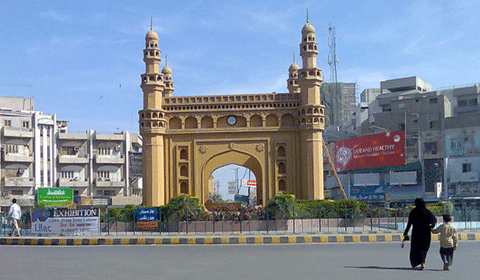

Kirthar National Park
A four hour drive north-east from Karachi, of the Super Highway takes the visitor deep into the heart of Kirthar National Park, a space that measures over 3,000 square kilometers in the Kirthar hills and is a good destination for a three day trip. October to February is the most comfortable…that is, coolest…time to go but the flowers bloom during the (relatively) wet monsoon in August.
Moenjodaro
At Moenjodaro (Mound of dead) in the west bank of the Indus in Sindh one can see the remains of one of the earliest and most developed urban civilizations of the ancient world. Discovered in 1922, Moenjodaro was once metropolis of great importance, forming part of the Indus Valley Civilization. Now one can find the 4,000 years old brick ruins.
The Indus Valley Civilization flourished from 3,000 to 1,500 BC, making it contemporary with the ancient civilization of Egypt and Mesopotamia. At its height it comprised at least 400 cities and towns along the Indus and its tributaries, covering most of the present-day Pakistan and stretching north-west as far as modern Kabul and east as far as modern Delhi. The water ways were the main highways connecting the empire. Flat bottomed barges almost identical to those still use today plied the rivers from city to city. Few of the cities have been excavated.
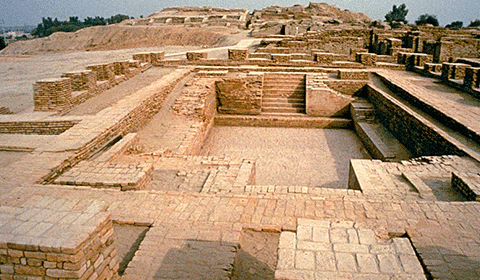

Sukkur
North of Larkana the landscape becomes luxuriant. In Sukkur the railway line and the highway split up, with a road and rail tracks leading north-west to Quetta via Sibi and Jacobabad, while another highway and railway line go via Rahimyar Khan and Sadiqabad straight to Multan. Sukkur is a sprawling town with beautiful mosques, gardens, and shrines. As a desert oasis town, it boasts many havelis which are decorated with geometric, floral designs and painted in a variety of bright, contrasting colors.
Khyber Pakhtunkhwa
Runs for over 1,100 kilometres (680 miles) along the border with Afghanistan. Peshawar is its capital and the Vale of Peshawar, fertile and well watered by the Kabul and Swat rivers, is its heart. This was also the heart of the ancient kingdom of Gandhara and is rich in archaeological remains. The northern half of the province consists of five river valleys running roughly parallel, north to south: Chitral, Dir, Swat, Indus and Kaghan. These valleys are on the northern edge of the monsoon belt. They are fairly green and partly wooded in their southern sections.
Peshawar
Peshawar, the capital city of North-West Frontier Province, is a frontier town, the meeting place of the sub-continent and Central Asia. It is also a place where ancient traditions jostle with those of today, where the bazaar in the old city has changed little in the past hundred years except to become the neighbor of a modern university, some modern hotels, several international banks and one of the best museums in Pakistan.
